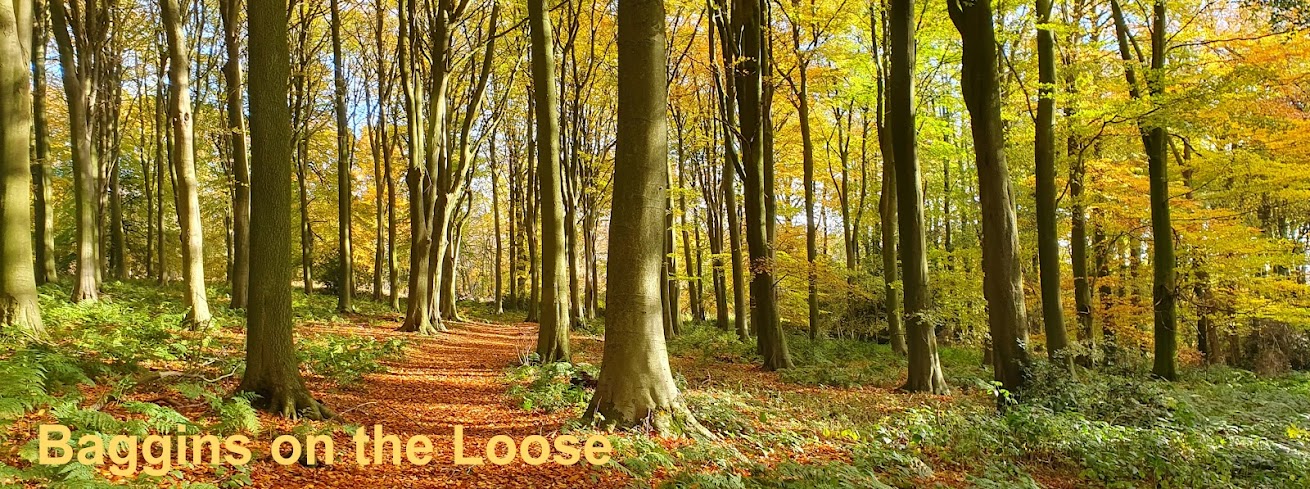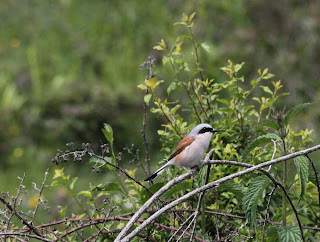 Yellow Wagtails were one of the most obvious birds around and luckily from a photographic point of view also the most colourful. Yellow Wagtails are one of those birds that look different depending where in the world you see them .... nothing to do with planetary perspective, that would be weird, it's just that they have many sub species. In layman's terms you could say that they have many cousins. Yellow wags in the UK for example are almost completely yellow whilst in France and Spain they have bluish heads. Here's a nice one from our trip and below British race bird (courtesy of Google Images)
Yellow Wagtails were one of the most obvious birds around and luckily from a photographic point of view also the most colourful. Yellow Wagtails are one of those birds that look different depending where in the world you see them .... nothing to do with planetary perspective, that would be weird, it's just that they have many sub species. In layman's terms you could say that they have many cousins. Yellow wags in the UK for example are almost completely yellow whilst in France and Spain they have bluish heads. Here's a nice one from our trip and below British race bird (courtesy of Google Images) You'll see a slightly different race or 'cousin' of the same bird in Scandinavia and another in Italy but to my mind the British race is the most colourful. There's a similar thing going on with other wagtails ... here's a White Wagtail on the reserve which is in fact the main species and below it's much darker cousin found in the UK, the Pied Wagtail.
You'll see a slightly different race or 'cousin' of the same bird in Scandinavia and another in Italy but to my mind the British race is the most colourful. There's a similar thing going on with other wagtails ... here's a White Wagtail on the reserve which is in fact the main species and below it's much darker cousin found in the UK, the Pied Wagtail.Right that's wagtails sorted lets move on!
Warblers are a tiny (smaller than sparrows as a rule) group of birds that you'll more often hear than see but they were very obvious on the reserve with Whitethroats and Melodious Warblers singing from bushes and tree tops everywhere. On our last day we spent about 3 hours on a viewing platform near the visitor centre and being at tree top height it was ideal for photographing both of these species. I struggled a bit with the Mi lad ohs (my slang for Melodious Warblers because they're so perky and bold) and this is the best I could do ....
Much better luck with Whitethroats and some good captures here .... even got one singing in mid flight!
Have to say I was pretty impressed with how all of these came out, the detail is very good and at this kind of range (within 20 meters) and more or less filling the frame this is one situation where the Canon EF400 really shines. Just as well because I've just received the estimate from Tamron for fixing my 200-500 and at £235 it may well end with a drink 'accidently' spilt on it, if you see what I mean! I do miss the extra reach though and maybe it's time to start looking at a 1.4 or 2x converter.
 Ok, moving on, and I promised some non bird pics from the trip. To get some idea of the landscape of the place I think fits the bill, you even get the dubious bonus of some mad birder with a feather in his hat!
Ok, moving on, and I promised some non bird pics from the trip. To get some idea of the landscape of the place I think fits the bill, you even get the dubious bonus of some mad birder with a feather in his hat! I don't get much chance to photograph frogs, sometimes I'm wishing they'd shut up so I can hear the birds but as I happened to look over a bank there were some croakers looking quite pretty in a ditch surrounded by water flowers and with the sun on them (pic left). No idea what kind of frog it is!
I don't get much chance to photograph frogs, sometimes I'm wishing they'd shut up so I can hear the birds but as I happened to look over a bank there were some croakers looking quite pretty in a ditch surrounded by water flowers and with the sun on them (pic left). No idea what kind of frog it is!The only other obvious photogenic animals about were Hares, particularly active during the evening. Included one at the end of part 1 of this trip report but they were so handsome looking hare's another!
 When we explored the coastal strip we came upon a nudist beach... Mark made a play of scanning out to sea (there is a type of sea bird called a boobie!)... anyway, I moved on and I took picture of this lighthouse!
When we explored the coastal strip we came upon a nudist beach... Mark made a play of scanning out to sea (there is a type of sea bird called a boobie!)... anyway, I moved on and I took picture of this lighthouse!Always nice to add a bit of colour to the blog and whenever I see nice flowers or butterflies I usually snap them up. Here's a nice pink flower that I'm sure someone will know the correct name for ...
...and here's a couple of butterflies that I do know the correct names for!
 |
| Red Admiral (Vanessa atalanta) |
 |
| Swallowtail (Papilio machaon) |
In more ways than I'm going to make a swift return to a few 'odds and sods' bird pics. Ever tried taking a picture of a Swift? Damned tricky and nearly always I've failed to get even half decent captures....they just fly so fast! I took loads from the viewing platform in the hope that maybe a couple would come out well enough to post. These are not nearly as good as I'd hoped but for the record ...
A few more left overs from the many bird pics I took on the reserve
 |
Goldfinch |
 |
Goldfinch |
 |
| Little Egret |
 |
| Spotted Flycatcher And lastly here's a picture of some Yellow Flag Irises that Mark wanted me to take a picture so here you go matey! |















































